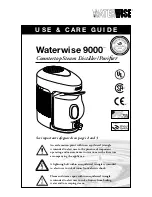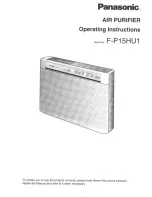
5 Installation
Installation manual
22
RWEQ96~432TAYD
∗
+ RWEQ96~432TATJ
∗
VRV W T-Series water-cooled system air conditioner
5 .3 .7
Protection against contamination
Protect the piping as described in the following table to prevent dirt,
liquid or dust from entering the piping.
Unit
Installation period
Protection method
Outside unit
>1 month
Pinch the pipe
<1 month
Pinch or tape the pipe
Indoor unit
Regardless of the
period
Seal the piping and wiring intake holes using sealing material (field
supply), otherwise the capacity of the unit will drop and small
animals may enter the machine.
If the gaps are not properly sealed, sound level will increase and
sweat problems can occur.
5 .3 .8
To braze the pipe end
NOTE
Precautions when connecting field piping. Add brazing
material as shown in the figure.
1
1
1
1
2
2
≤Ø1 inch (25.4 mm)
>Ø1 inch (25.4 mm)
▪ When brazing, blow through with nitrogen to prevent creation of
large quantities of oxidised film on the inside of the piping. This
film adversely affects valves and compressors in the refrigerating
system and prevents proper operation.
▪ The Dry Nitrogen pressure should be set to 2.9 psi (0.02 MPa (i.e.
just enough so it can be felt on the skin)) with a pressure-reducing
valve.
a
b
c
d
e
f
f
a
Refrigerant piping
b
Part to be brazed
c
Taping
d
Manual valve
e
Pressure-reducing valve
f
Nitrogen
▪ Do NOT use anti-oxidants when brazing pipe joints.
Residue can clog pipes and break equipment.
▪ Do NOT use flux when brazing copper-to-copper refrigerant
piping. Use phosphor copper brazing filler alloy (BCuP), which
does not require flux.
Flux has an extremely harmful influence on refrigerant piping
systems. For instance, if chlorine based flux is used, it will cause
pipe corrosion or, in particular, if the flux contains fluorine, it will
deteriorate the refrigerant oil.
5 .3 .9
Using the stop valve and service port
To handle the stop valve
▪ Make sure to keep all stop valves open during operation.
▪ The figure below shows the name of each part required in
handling the stop valve.
▪ The stop valve is factory closed.
c
d
a
b
a
Service port and service port cover
b
Stop valve
c
Field piping connection
d
Stop valve cover
a
b
c
d
e
a
Service port
b
Stop valve cover
c
Hexagon hole
d
Shaft
e
Seal
To open the stop valve
1
Remove the stop valve cover.
2
Insert a hexagon wrench into the stop valve and turn the stop
valve counterclockwise.
3
When the stop valve cannot be turned any further, stop turning.
Result:
The valve is now open.
To fully open the stop valve with a diameter of Ø3/4 inch to Ø1 inch
(Ø19.1 mm to Ø25.4 mm), turn the hexagonal wrench until a torque
between 19.9 and 24.3 ft·lbf (27.0 and 33.0 N·m) is achieved.
Inadequate torque may cause leakage of refrigerant and breakage of
the stop valve cap.
1
2
3
4
To close the stop valve
1
Remove the stop valve cover.
2
Insert a hexagon wrench into the stop valve and turn the stop
valve clockwise.
3
When the stop valve cannot be turned any further, stop turning.
Result:
The valve is now closed.
01_EN_4P602454-1C.indd 22
2020/07/29 16:16:45
















































